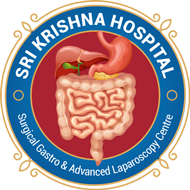What is Endoscopy?
An upper GI endoscopy or EGD (esophagogastroduodenoscopy) is a procedure to diagnose and treat problems in your upper GI (gastrointestinal) tract.The upper GI tract includes your food pipe (esophagus), stomach, and the first part of your small intestine (the duodenum).
Why upper GI endoscopy is done?
- Investigate symptoms. An endoscopy may help to determine what's causing digestive signs and symptoms, such as nausea, vomiting, abdominal pain, difficulty swallowing and gastrointestinal bleeding.
- Diagnose. May use an endoscopy to collect tissue samples (biopsy) to test for diseases and conditions, such as anemia, bleeding, inflammation, diarrhea or cancers of the digestive system.
- Treat. Can pass special tools through the endoscope to treat problems in your digestive system, such as burning a bleeding vessel to stop bleeding, widening a narrow esophagus, clipping off a polyp or removing a foreign object.
An endoscopy is sometimes combined with other procedures, such as an ultrasound. An ultrasound probe may be attached to the endoscope to create specialized images of the wall of your esophagus or stomach. An endoscopic ultrasound may also help to create images of hard-to-reach organs, such as your pancreas. Newer endoscopes use high-definition video to provide clearer images.
Many endoscopes allow to use technology called narrow band imaging, which uses special light to help better detect precancerous conditions, such as Barrett's esophagus.
How Upper GI Endoscopyis done ?
How you prepare
- Fast before the endoscopy. Stop drinking and eating four to eight hours before endoscopy to ensure stomach is empty for the procedure.
- Stop taking certain medications.stop taking certain blood-thinning medications in the days before your endoscopy. Blood thinners may increase your risk of bleeding if certain procedures are performed during the endoscopy.
Tell about all the medications and supplements you're taking before endoscopy.
During an endoscopy
During an upper endoscopy procedure, lie down on a table on back or on your side. As the procedure gets underway:
- Monitors often will be attached to your body. This will allow your health care team to monitor your breathing, blood pressure and heart rate.
- Your doctor may spray an anesthetic in your mouth. This medication will numb your throat in preparation for insertion of the long, flexible tube (endoscope). You may be asked to wear a plastic mouth guard to hold your mouth open.
- Then the endoscope is inserted in your mouth. may ask you to swallow as the scope passes down your throat. You may feel some pressure in throat, but you shouldn't feel pain.
You can't talk after the endoscope passes down your throat, though you can make noises. The endoscope doesn't interfere with your breathing.
As your doctor passes the endoscope down your esophagus:
- A tiny camera at the tip transmits images to a video monitor in the exam room. watch monitor to look for abnormalities in upper digestive tract. If abnormalities are found in digestive tract, record images for later examination.
- Gentle air pressure may be fed into your esophagus to inflate your digestive tract. This allows the endoscope to move freely. And it allows more easily examine the folds of digestive tract. You may feel pressure or fullness from the added air.
- Your doctor will pass special surgical tools through the endoscope to collect a tissue sample or remove a polyp. watch the video monitor to guide the tools.
When your doctor has finished the exam, the endoscope is slowly retracted through your mouth. An endoscopy typically takes 5 to 10 minutes, depending on situation.
After the endoscopy
Once you're at home, you may experience some mildly uncomfortable signs and symptoms after endoscopy, such as
- Bloating and gas
- Cramping
- Sore throat
These signs and symptoms will improve with time.
Post endoscopy recovery
You will not be allowed to eat or drink anything until your gag reflex returns. This is to prevent you from choking. You may have a sore throat and pain for a few days when you swallow. This is normal.
You may feel gassy after the procedure.
You may go back to your normal diet and activities
Advantages of Upper GI Endoscopy
An upper endoscopy offers the following benefits:
- The procedure is fast and you’ll be comfortable throughout
- It allows to diagnosis problems so you can begin treatment if needed
- In some cases, can correct issues during the procedure
- An EGD provides a more detailed view of the esophagus, stomach, and duodenum than an X-ray can provide





